Best Plants to Grow in Spring
- February 7, 2024
- 0 comment
The arrival of spring breathes new life into the world around us, marking an ideal time for garden enthusiasts to start planting. With the last frost giving way to warmer days, spring offers a unique window of opportunity for a variety of plants to flourish. Choosing the right plants for spring planting not only aligns with the season’s weather conditions but also contributes to a vibrant and healthy garden. This guide aims to illuminate the best plants to grow during this season, ensuring both novice and experienced gardeners can enjoy a fruitful and colorful spring.
Table of Contents
- Understanding Spring Planting
- Best Vegetables to Plant in Spring
- Best Flowers to Plant in Spring
- Best Herbs to Grow in Spring
- Fruit Trees and Bushes Ideal for Spring
- Enhanced Spring Planting Guide
- Tips for Successful Spring Gardening
- Essential Maintenance and Care Tips for Thriving Plants in Spring
- Conclusion
- FAQs
Understanding Spring Planting
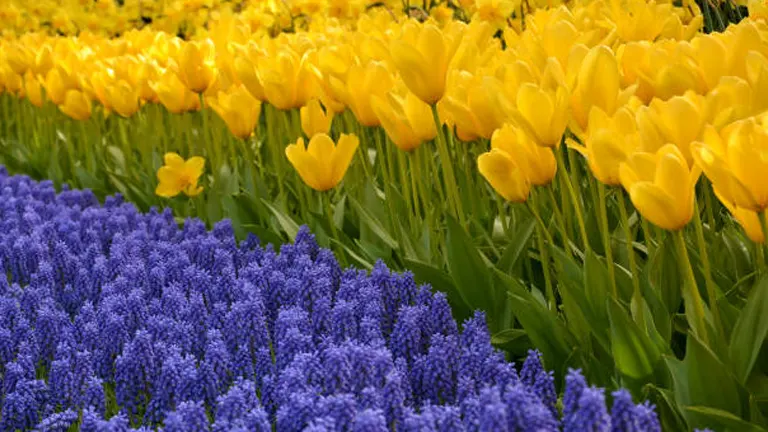
Spring is characterized by its mild weather and increasing daylight, which are conducive to the growth of many plants. However, understanding the specific conditions of your local climate is crucial for success. Soil preparation is the foundation of a productive garden, involving the loosening of soil, removal of weeds, and the addition of organic matter to enrich it.
Early planting in spring is beneficial for many plants, allowing them to establish roots and start growth cycles before the heat of summer sets in. It’s important to monitor local frost dates and prepare to protect tender plants if a late frost is expected.
Best Vegetables to Plant in Spring
Lettuce is a cold-tolerant vegetable that thrives in the cool temperatures of early spring. It has a quick growth cycle, allowing for multiple harvests if planted successively. For best results, plant lettuce in moist, well-drained soil and in an area that receives partial shade to protect it from the midday sun.

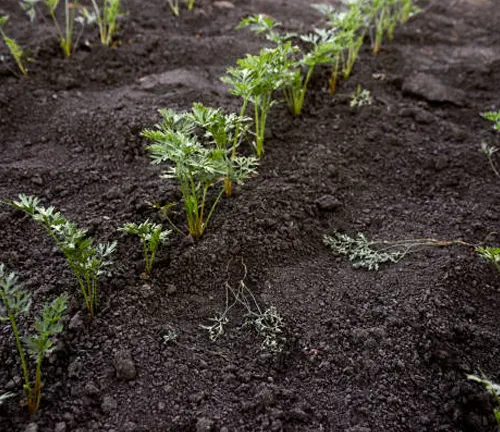
Carrots require cooler soil temperatures for germination, making early spring the perfect time to sow seeds directly into the garden. They prefer loose, sandy soil that allows for deep root development without obstruction. Keep the soil moist to encourage steady growth.
Peas are frost-resistant and need to be sown directly into the ground as early as the soil can be worked. They benefit from support for climbing, such as trellises or stakes, and should be planted in full sun to partial shade in well-drained soil.
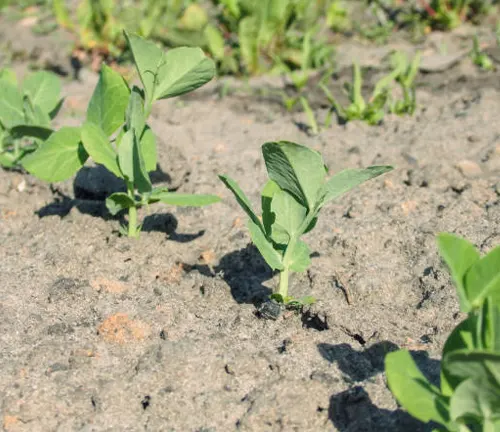
Additional Insights
| Vegetable | Planting Technique | Companion Planting | Post-Harvest Tips |
|---|---|---|---|
| Lettuce | Succession planting every two weeks | Pairs with chives or mint to deter pests | Harvest in the morning for crispier leaves. Store in a cool, humid place. |
| Carrots | Use seed tape for even spacing | Plant near onions or leeks to repel carrot flies | After harvest, remove greens to prevent moisture loss. Can be stored in sand for winter use. |
| Peas | Install supports at planting | Good predecessors for nitrogen-loving plants due to nitrogen-fixing abilities | After harvest, leave roots in the ground to decompose and enrich the soil. |
The strategies outlined in this guide present a valuable approach for gardeners aiming to enhance the effectiveness and sustainability of their spring gardening efforts. By focusing on practical tips and advanced techniques, the guide provides a pathway to healthier plants and increased yields. It serves as an educational resource, encouraging gardeners to adopt practices that align more closely with nature’s rhythms, ultimately leading to improved gardening outcomes and a more harmonious relationship with the environment.
Best Flowers to Plant in Spring
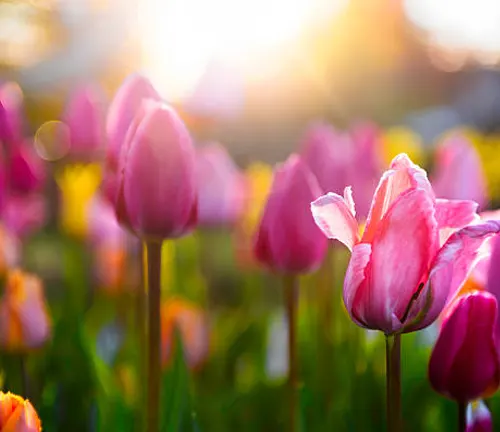
Tulips are synonymous with spring and offer a dazzling array of colors to any garden. For a successful bloom, tulip bulbs should be planted in the fall, as they require a period of winter chill to initiate spring flowering. Choose a sunny spot with well-drained soil and plant bulbs at a depth three times their height. Tulips are low maintenance but make a high impact, adding vibrant hues to your garden as one of the first signs of spring.
Pansies have the remarkable ability to withstand the cool temperatures of early spring and even light frosts. Their wide range of colors can brighten up any garden space or container. Plant pansies in moist, rich soil in a sunny to partly shaded location. Regular deadheading will encourage them to produce more flowers and extend their blooming period.
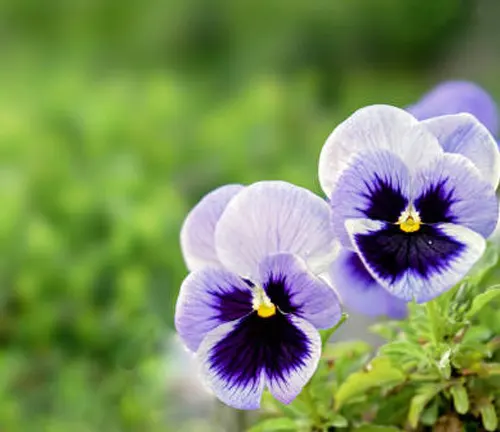
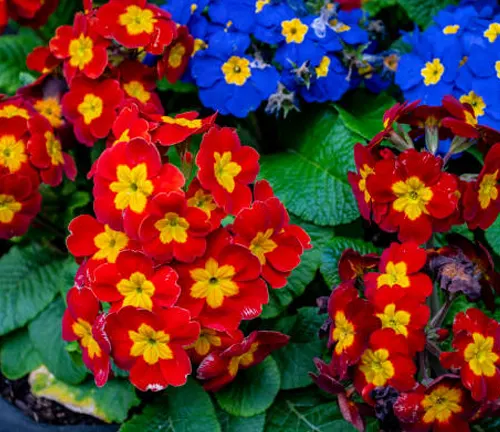
Primrose is another early bloomer, known for its variety of colors and ability to thrive in the cooler weather of spring. They prefer partially shaded areas and moist, well-drained soil. Primroses can be used to add a splash of color to borders, containers, and woodland gardens. They are also known for attracting pollinators early in the season, which is beneficial for the entire garden.
Additional Insights
| Flower | Planting Technique | Companion Planting | Post-Bloom Tips |
|---|---|---|---|
| Tulips | Plant bulbs in fall; depth three times their height | Pair with low-growing perennials to fill space | Remove spent blooms; allow foliage to die back naturally |
| Pansies | Plant in early spring or fall for spring bloom | Complement with spring bulbs for layered effect | Deadhead regularly to encourage more blooms |
| Primrose | Plant in early spring | Ideal alongside ferns and hostas in shaded areas | Water consistently; divide every few years for rejuvenation |
Incorporating these flowers into your garden not only ensures a burst of color in spring but also sets the stage for a thriving, pollinator-friendly environment.
Best Herbs to Grow in Spring
Cilantro thrives in the cooler temperatures of spring and can be sown directly into the soil as soon as the danger of frost has passed. It prefers full sun to partial shade and well-drained soil. Cilantro grows quickly and is known to bolt (flower and set seed) as the days get longer and warmer, so frequent harvesting is encouraged to prolong its leafy stage.
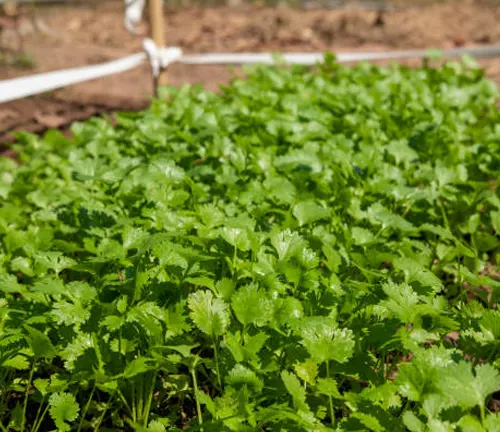
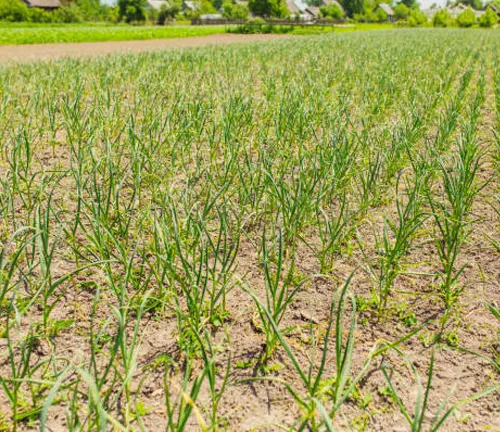
Chives are a hardy perennial herb that can be planted early in the spring. They prefer full sun but will grow in partial shade and require minimal maintenance once established. Chives can be harvested throughout the season by cutting the outer leaves at the base. They are excellent for adding a mild onion flavor to dishes and are also known for their decorative, edible flowers.
Parsley, both curly and flat-leaf varieties, can be started indoors or sown directly into the garden in early spring. It prefers rich, moist soil and can grow in full sun to partial shade. Parsley is a biennial plant but is commonly grown as an annual. Regular harvesting encourages more leaves to grow and prevents the plant from going to seed.

Additional Insights
| Herb | Planting Technique | Companion Planting | Post-Harvest Tips |
|---|---|---|---|
| Cilantro | Sow directly after last frost; full sun to partial shade | Pairs well with tomatoes and peppers; deters aphids | Harvest frequently to prevent bolting; can freeze or dry leaves |
| Chives | Plant early spring; full sun to partial shade | Complements roses and tomatoes; deters pests | Cut outer leaves at base for continuous harvest; flowers are edible |
| Parsley | Start indoors or sow directly in early spring; full sun to partial shade | Good companion for tomatoes and asparagus; enhances flavor | Harvest leaves from the outside to encourage more growth; can be dried or frozen |
Herbs are not only a delight for the garden but also elevate culinary dishes with fresh, homegrown flavors. Starting these herbs in spring ensures a steady supply throughout the growing season.
Fruit Trees and Bushes Ideal for Spring

Strawberries are a rewarding fruit to grow, with planting in early spring leading to a sweet summer harvest. Choose a sunny spot with well-drained, fertile soil. Strawberries can be grown in the ground, in containers, or even hanging baskets. Planting early varieties ensures berries ripen by early summer. Mulching around plants helps retain moisture, suppress weeds, and keep fruit clean.
Apple Trees are a long-term investment that starts paying off within a few years of planting. Spring is the perfect time to plant young apple trees, as it gives them enough time to establish roots before the hot summer months. Choose a sunny location with well-drained soil. It’s important to plant at least two different apple varieties close to each other for cross-pollination, which is essential for fruit production. Regular pruning and maintenance are key to healthy growth and bountiful harvests in the years to come.
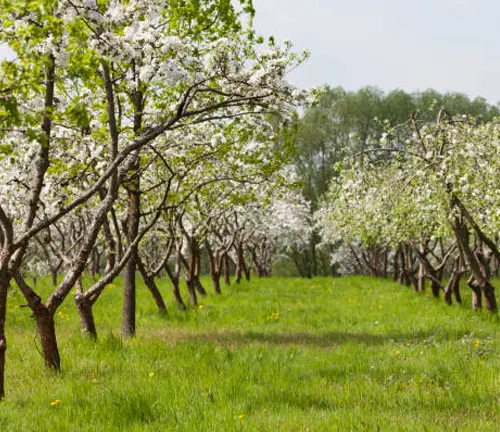
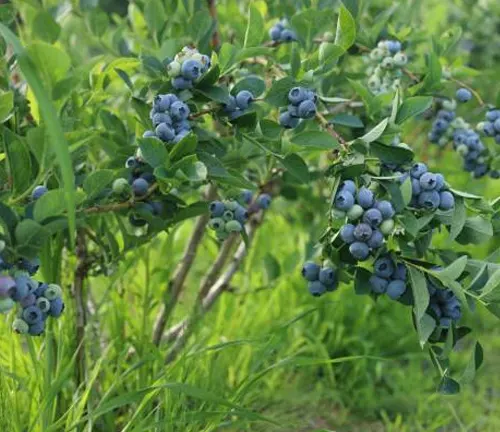
Blueberries require a bit more preparation, as they thrive in acidic soil with a pH of 4.5 to 5.5. Incorporating sulfur into the planting area weeks before planting can help achieve the desired acidity. Planting in early spring allows the bushes to acclimate to their new environment before entering their active growth phase. Blueberries are often planted in raised beds or containers to better control soil conditions. They require consistent moisture, so mulching and regular watering are crucial, especially during dry spells.
Additional Insights
| Fruit | Planting Technique | Soil and Sunlight Requirements | Care Tips |
|---|---|---|---|
| Strawberries | Plant in early spring; suitable for ground, containers, or hanging baskets | Well-drained, fertile soil; full sun | Mulch to retain moisture and suppress weeds; water regularly |
| Apple Trees | Plant young trees in spring; ensure cross-pollination by planting at least two varieties | Well-drained soil; full sun | Prune regularly for healthy growth; monitor and manage pests |
| Blueberries | Prepare acidic soil (pH 4.5-5.5); plant in early spring in raised beds or containers for better soil control | Acidic soil; full sun to partial shade | Mulch to maintain moisture; water consistently, especially in dry spells |
Planting fruit trees and bushes not only enhances the beauty of your garden but also promises the sweet reward of fresh fruits for your table. With proper care and attention, these plants can provide joy and produce for many years.
Enhanced Spring Planting Guide
| Plant Type | Optimal Soil pH | Sunlight Requirements | Growth Time to Harvest/Bloom | Specific Benefits/Uses |
|---|---|---|---|---|
| Vegetables | ||||
| Lettuce | 6.0 – 7.0 | Full sun to partial shade | 45-55 days | High in vitamins A and K, and folate. |
| Carrots | 5.8 – 6.8 | Full sun | 50-75 days | Rich in beta-carotene and fiber. |
| Peas | 6.0 – 7.5 | Full sun to partial shade | 60-70 days | Excellent source of protein and fiber. |
| Flowers | ||||
| Tulips | 6.0 – 7.0 | Full sun | Blooms in spring following fall planting | Enhances garden aesthetics; cut flowers. |
| Pansies | 5.4 – 5.8 | Full sun to partial shade | 6-10 weeks to bloom | Edible flowers; adds color in cool weather. |
| Primrose | 6.0 – 7.0 | Partial shade | Blooms early spring | Attracts pollinators; vibrant colors. |
| Herbs | ||||
| Cilantro | 6.2 – 6.8 | Full sun to partial shade | 50-55 days | Culinary herb; seeds (coriander) are spices. |
| Chives | 6.0 – 7.0 | Full sun to partial shade | 60-90 days | Culinary use; attracts pollinators. |
| Parsley | 5.5 – 6.7 | Full sun to partial shade | 70-90 days | Rich in vitamins C, A, and iron. |
| Fruit Trees/Bushes | ||||
| Strawberries | 5.5 – 6.5 | Full sun | 3-4 weeks after bloom for fruit | High in vitamin C and antioxidants. |
| Apple Trees | 6.0 – 7.0 | Full sun | 4-5 years for fruit | Produces fruit for eating, cooking, cider. |
| Blueberries | 4.5 – 5.5 | Full sun to partial shade | 2-3 years for fruit | High in antioxidants; promotes heart health. |
The table provided serves as a comprehensive guide for spring gardening, offering crucial details such as optimal soil pH, sunlight requirements, and growth timelines for a variety of plants. This information is invaluable for gardeners aiming to maximize their garden’s potential during the spring season. It highlights the importance of understanding each plant’s specific needs, from vegetables and herbs to flowers and fruit trees, allowing for informed decisions that lead to successful cultivation. The focus on practical details like soil conditions and sunlight exposure underscores a fundamental aspect of gardening: the need for meticulous planning and care. In essence, this guide is a tool that empowers gardeners to achieve a productive and visually appealing garden by applying knowledge and attention to the unique requirements of each plant.
Tips for Successful Spring Gardening
To ensure a thriving garden, here are some final tips:
- Monitor Weather Patterns: Keep an eye on local weather forecasts to protect your plants from late frosts. Covering tender seedlings with frost cloth or newspaper can provide necessary protection during unexpected cold snaps.
- Soil Testing and Amendment: Before planting, test your soil to determine its pH and nutrient levels. Amending the soil based on test results can improve plant health and yield. Adding organic matter like compost can enhance soil structure, fertility, and water retention.
- Regular Watering and Fertilization: Spring plants benefit from consistent moisture. Water early in the day to reduce evaporation and prevent fungal diseases. Use a balanced fertilizer according to the needs of each plant species to encourage healthy growth without overstimulation.
- Mulching: Apply a layer of mulch around your plants to help maintain soil moisture, regulate soil temperature, and suppress weed growth. Organic mulches, such as straw, bark chips, or leaf litter, also contribute to soil health as they decompose.
- Pest and Disease Management: Regularly inspect your plants for signs of pests and diseases. Early detection is key to managing infestations or infections before they spread. Consider using natural remedies or environmentally friendly products to tackle these issues, keeping your garden healthy and chemical-free.
- Pruning and Deadheading: Early spring is an ideal time for pruning many types of plants to encourage healthy growth and flowering. Deadheading spent flowers, especially in blooming plants like pansies and primroses, can prolong their bloom time and enhance the garden’s appearance.
- Plant Selection: Choose plant varieties that are well-suited to your local climate and soil conditions. Opting for native plants or those acclimatized to your region can lead to better growth outcomes, as these plants are naturally more resistant to local pests and diseases and are better adapted to the local climate.
- Garden Planning: Plan your garden layout with consideration for each plant’s sunlight, space, and watering needs. Grouping plants with similar requirements together can make maintenance more manageable and increase your garden’s overall health and productivity.
Essential Maintenance and Care Tips for Thriving Plants in Spring
- Regular Watering: Spring plants often face fluctuating weather conditions, which can affect soil moisture levels. Ensure a consistent watering schedule to keep the soil evenly moist, particularly important for young seedlings that have less developed root systems. Avoid overhead watering in the evening to reduce the risk of leaf diseases.
- Mulching: Apply a 2-3 inch layer of organic mulch around your plants. Mulch helps retain soil moisture, regulate soil temperature, and suppress weed growth. Organic mulches, such as straw or bark, also break down over time, adding nutrients back into the soil.
- Fertilization: Begin fertilizing a few weeks after planting, once plants have settled and started to grow. Use a balanced fertilizer tailored to the needs of specific plants in your garden. Over-fertilizing can harm plants, leading to lush foliage at the expense of flowers or fruit.
- Pest and Disease Monitoring: Early detection is key to managing pests and diseases. Regularly inspect plants for signs of trouble and take immediate action if needed. Use environmentally friendly options whenever possible, such as neem oil for pests or removing affected parts to control fungal diseases.
- Staking and Support: Plants like peas and tomatoes benefit from staking or using trellises. Supports help maintain plant structure, promote air circulation, and facilitate harvesting. Install stakes or trellises at planting time to avoid disturbing the roots later.
- Weeding: Keep the garden free of weeds, which compete with your plants for nutrients and water. Regular weeding also helps prevent pests and diseases from spreading. Mulching and using landscape fabric can significantly reduce weed growth.
- Thinning Seedlings: For plants sown directly into the garden, thinning seedlings is crucial to prevent overcrowding. This ensures that each plant has enough space to develop robustly, leading to healthier plants and better yields.
- Pruning: Early spring is a good time to prune certain plants and trees to remove dead or diseased branches and to shape the plant for the upcoming growing season. Pruning improves light penetration and air circulation, which are vital for plant health.
- Soil Care: Regularly check soil moisture and adjust watering as necessary, especially during dry spells. Consider adding a layer of compost to enrich the soil and promote healthy plant growth.
- Acclimatization for Indoor Starts: For plants started indoors, gradually acclimate them to outdoor conditions over a week before transplanting. This process, known as hardening off, reduces shock and improves the plant’s chance of thriving in its new environment.
Conclusion
Spring gardening opens a world of possibilities for both novice and seasoned gardeners. By choosing the right plants and providing them with the care they need, you can enjoy a vibrant and productive garden. Experiment with different plants to discover what works best in your garden’s unique conditions. We invite you to share your spring gardening experiences and successes. Let’s grow together, creating beautiful spaces and enjoying the fruits (and vegetables) of our labor.
FAQs
- What are the best vegetables to plant in early spring?
Early spring favors cool-weather vegetables like lettuce, peas, and carrots. These can handle the cooler early spring temperatures and even light frost. - Can I plant flowers in spring that will bloom all summer?
Yes, planting spring flowers like pansies and primroses, followed by summer bloomers such as marigolds and zinnias, ensures ongoing garden vibrancy. Perennials like coneflowers and daylilies also bloom into summer. - What herbs are best to start in spring?
Herbs such as cilantro, chives, and parsley are great to start in spring, thriving in the cooler weather and providing early harvests. - How do I protect spring plants from unexpected frost?
Covering plants with frost cloth or even a lightweight blanket during unexpected cold snaps can protect them. Removing the cover in the morning allows plants to breathe and receive sunlight. - When is the best time to water spring plants?
Early morning is ideal, reducing evaporation and helping prevent fungal diseases by allowing foliage to dry before nightfall. - What is the benefit of mulching in a spring garden?
Mulch retains soil moisture, suppresses weeds, and helps regulate soil temperature, benefiting plant health and reducing maintenance efforts. - How can I ensure my fruit trees thrive in spring?
Planting in well-drained soil, ensuring adequate sunlight, and providing regular watering and fertilization tailored to their needs are key. Also, ensure cross-pollination for fruit trees that require it, like apple trees. - Can I grow vegetables in containers if I don’t have a garden?
Absolutely, many vegetables, including tomatoes, peppers, and leafy greens, thrive in containers. Ensure they have enough depth for roots to grow and use high-quality potting mix for best results.
As spring ushers in new beginnings, selecting the best plants for your garden can transform it into a vibrant haven of growth and color. From the nourishing vegetables like lettuce and peas to the bright blooms of pansies and primroses, and the aromatic delight of herbs like cilantro and chives, each plant contributes to the season’s bounty. Remember, with the right care, watering, and love, your spring garden can flourish into a beautiful and productive space. Happy planting!

Benjamin Brooks
Forestry AuthorGreetings! I'm Benjamin Brooks, and my journey over the past 15 years has revolved around the fascinating realms of content creation, expertise in snow clearing, and the intricate world of lumberjacking and landscaping. What began as a simple curiosity about the natural world and heavy machinery has evolved into a passionate profession where my love for crafting words intertwines seamlessly with my lumberjacking and garden skills.




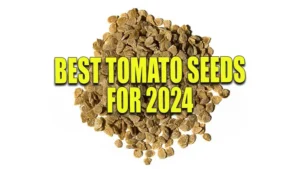


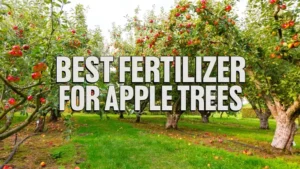





Leave your comment